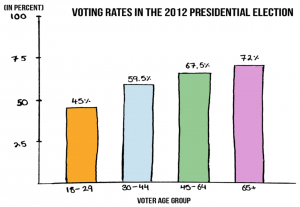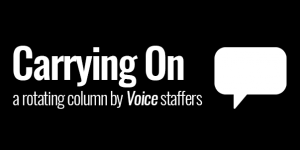Statistics from the 2016 first-year and transfer student applications show that Georgetown’s applicant pool increased by a little more than two percent this year, and over the past five years has become more diverse and of higher academic quality.
Georgetown Dean of Admissions Charles Deacon said that the university has already received around 19,935 applications this year. However, with the submission of late applications, that number is expected to reach about 19,950 total, the second-largest pool in the university’s history behind that of 2012. Compared to last year, the Office of Admissions will receive approximately 472 more applications for the Class of 2020, a bump of almost two percent.

Data from Georgetown University Office of Undergraduate Admissions
Following a trend that began in 2013, this year, multicultural applicants—domestic and international students who self-identify as at least one non-Caucasian race—account for more than half of submissions.
Of American applicants, the 1,958 applications from black students constituted almost one-tenth of the total applicant pool, the same percentage as 2015. With 3,295 applicants, Asian-American students make up approximately 17 percent of the total pool, with the 2,465 applications from Hispanic students equalling 12 percent of the total showing a one-year plateau for that group.
Georgetown received only 55 more applications from white Americans than last year. However, Deacon observes that even this small growth shows the university’s overall success. Despite the national rate of white high school graduates decreasing by nine percent, Georgetown’s white applicants have actually increased by two percent from 2011 to 2016.
Deacon remarked that these numbers reflect a greater pattern of trends from 2011 to 2016 that show a steady growth in the total number of applications to Georgetown, as well as shifting demographics in the ethnic and cultural mix of applicants.
“It’s very hard to make a big comparison from one year to the next,” said Deacon. “So we like to look at trend data to make inferences over a long period, and you can see a significant change over that period of time [2011 to 2016].”
The total number of applications has grown by four percent, from 19,228 in 2011 to this year’s 19,950, despite a national decrease in the number of high school graduates by four percent in the same time. However, Deacon commented that it is not so much the raw increase but the smaller internal pieces that make up the growth that is important to him.
“Total multicultural applicants—this is excluding white students—actually increased 13 percent during this five year period,” said Deacon. “So to the extent that people say, ‘are you becoming more diverse?’ the answer is ‘yes.’”
From 2011 to 2016, the gross number of black applicants has grown by nine percent, while the Asian-American pool saw a rise of 18 percent. The biggest growth has been the Hispanic applicant pool, as 426 more Hispanic students applied in 2016 than in 2011, an increase of 21 percent.
However, racial and ethnic diversity are not the only measures Deacon takes into consideration.
“The one area that we’ve been aggressively working at is diversifying the socioeconomic mix of the pool,” Deacon said. “This is the one area that we’ve been most handicapped because of the limit of our financial aid. If we were able to be more generous, that would be the hole that needs filling up in terms of the mix of students. We’re naturally, like Harvard and the rest [of top universities], reflecting a disproportionately large percentage from the highest [economic] tier.”
“[The rates are] going down faster in what most people might think of as Georgetown’s traditional markets,” said Deacon. “So we say, relative to just what the raw numbers would say, we have done relatively better, but when you look at the internals, we’ve done a lot better, considering that what many consider our largest markets have been going down.”
Applications from international students have had a marginal increase of three percent over the past five years. Deacon remarked that the growth of international students had reached a peak and then stabilized at around 11 percent of the total applicant pool.
Besides the increasing proportionality of cultural and ethnic diversity, the quality of the applicant pool has also been shifting. Over the five-year period, the number of applicants in the top ten percent of their graduating class has grown by six percent and those scoring above a 750 on the SAT Critical Reading test have increased by 44 percent.
Deacon believes this increase in quality is because of how Georgetown has positioned itself as a national and international brand over the past decades. With higher prestige, Georgetown is able to attract dedicated applicants willing to go through the separate application process.
“Georgetown has all of the ingredients of a great national brand, and you have to bring attention to it,” said Deacon. “Over the last twenty, thirty years, Georgetown has become the place to go in Washington. And not only that, but it’s at the level of the Harvards, Princetons, and Stanfords, and that’s after a long position of marketing and positioning.”
Despite admitting that Georgetown does not have as high application numbers or as low an admission rate as Harvard, Princeton, or Stanford, Deacon has defended his commitment to keep Georgetown off the Common Application. The dean believes that Georgetown’s application numbers reflect reality, whereas an inevitable boost in numbers from accepting the Common Application would put undue, artificial pressure on applicants and hide those who have genuine interest in the school.
“For Georgetown, it’s not so much whether we get our admit rate down to 5.22 percent or we up our applicant pool to 40,000,” said Deacon. “It’s that we get a talented group of students that reflect the diversity of the country.”





